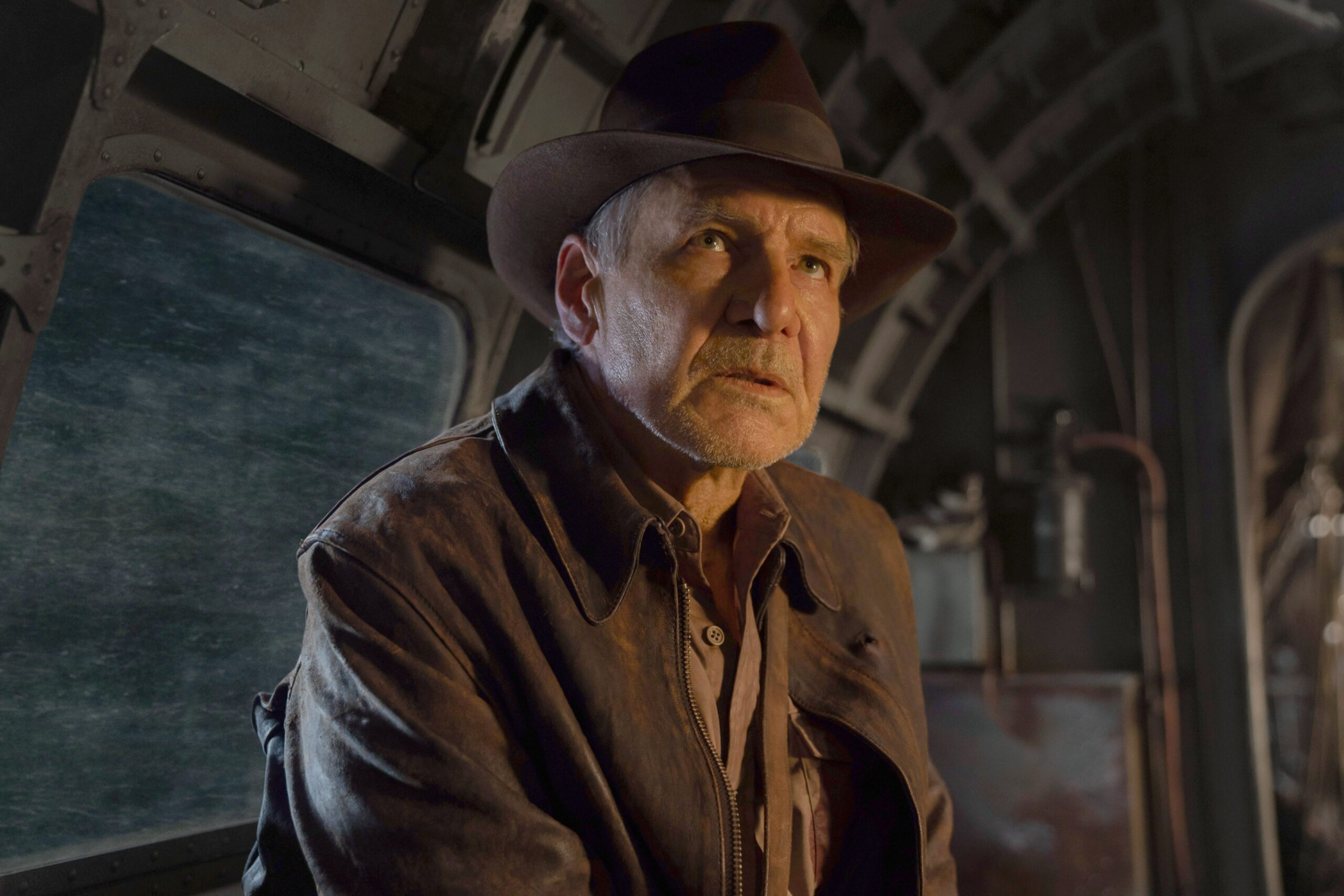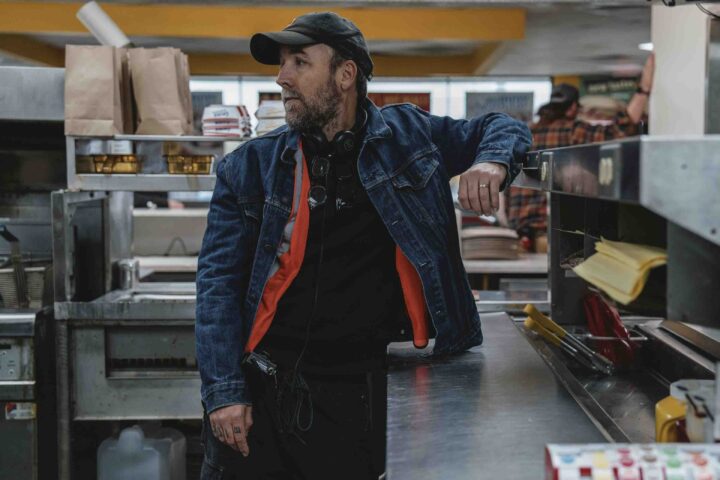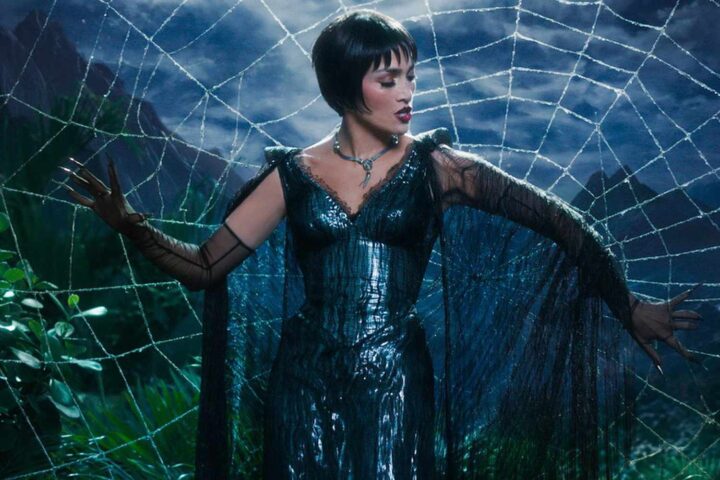The ill-conceived Indiana Jones and the Dial of Destiny disappoints as a lackluster return for the renowned archaeologist and adventurer. Despite the enduring star power of Harrison Ford, this tired installment fails to generate the same level of excitement that defined its predecessors, devoid of the spirited fun that made the early entries so beloved.
In this latest chapter, Steven Spielberg entrusts the directorial reins to James Mangold, an accomplished filmmaker known for his successes in very good films like Walk the Line and 3:10 to Yuma. While Mangold’s involvement is professionally workmanlike, an action-adventure director he is not, and his approach delivers a largely pedestrian interpretation of the established franchise tropes.
While the film has no shortage of high-speed car chases in bustling far-eastern settings, perilous plane escapes plummeting from great heights, treacherous caves infested with colossal scorpions and even the would-be intrigue of underwater mysteries, these sequences feel clunkily second-tier, lacking the grandeur and thrills of their predecessors.
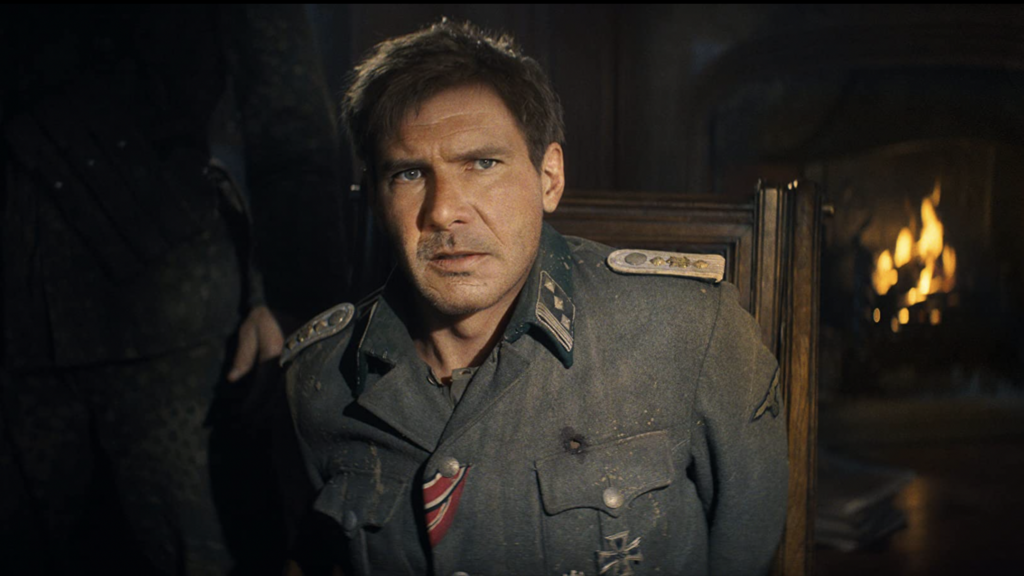
The eighty-year-old Ford’s return to the bullwhip, purportedly for the last time, almost proves to be the film’s saving grace. Regrettably, the screenplay, penned by Jez Butterworth, John-Henry Butterworth, David Koepp and Mangold himself, dutifully follows a formulaic path while failing to recapture the rogue essence that made Indiana Jones a swashbuckling hero. In this octogenarian iteration, Ford’s portrayal, adorned with self-effacing humor, also occasionally feels overshadowed by the too prominent focus on co-star Phoebe Waller-Bridge, who portrays Dr. Jones’ plucky goddaughter and telegraphed heir apparent to future installments (which seem highly unlikely).
Predictably commencing in Nazi Germany circa 1944, a familiar setting within the series, Ford’s de-aged appearance as Indy momentarily captures nostalgia despite a jarring disconnect between the youthful CGI and his aged voice. Captured by Nazis alongside his academic colleague Basil Shaw (Toby Jones) while attempting to retrieve a stolen antiquity known as the Dial of Destiny, attributed to the ancient Greek mathematician Archimedes and believed to possess the power of time travel, Indy finds himself in the clutches of the nefarious Nazi Jürgen Voller, portrayed by the esteemed Mads Mikkelsen, underutilized. The ensuing chase atop a speeding train proves anemic as both an action set-piece and rousing opener.
Fast-forward twenty-five years, and we encounter an older, melancholic Indiana Jones, burdened by loneliness and personal regrets that add little to his character development (and the timeline doesn’t work—in 1944 Ford appears to be about 35 while in 1969 he’s far older than 60). Learning of German involvement in the U.S. space program and with Voller now part of NASA’s Apollo mission, a concerned Indy embarks on a new adventure that leads to an unexpected alliance with goddaughter Helena Shaw (Waller-Bridge), an archaeologist in her own right. Waller-Bridge is sly and spry, and if she fails to match the formidable presence of Karen Allen’s Marion Ravenwood she far exceeds gratingly Indiana Jones and the Temple of Doom chanteuse Willie Scott, shrilly played by Kate Capshaw.
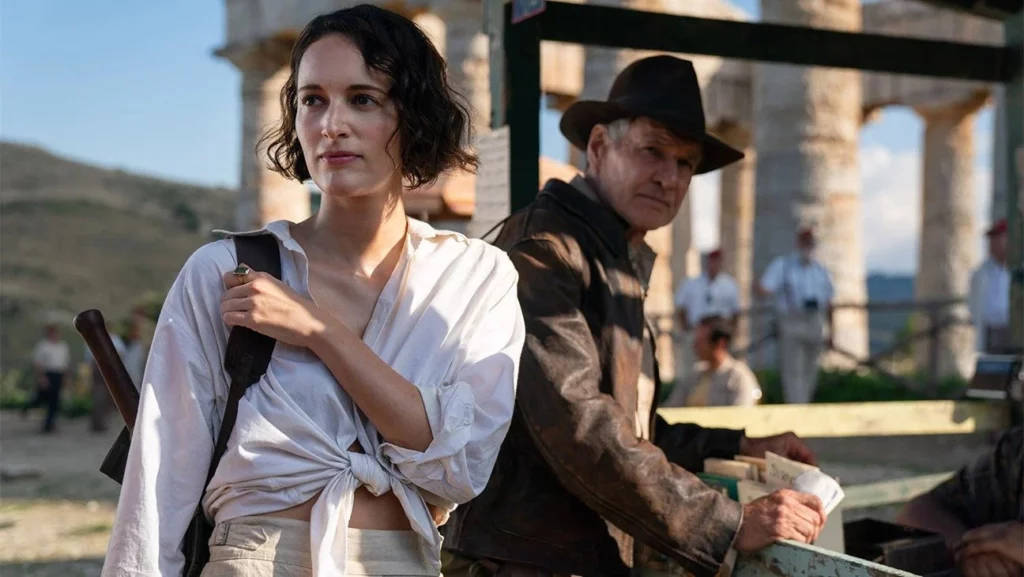
A ho-hum buddy dynamic unfolds as Jones finds himself revitalized, propelled into action alongside Helena, who shares a vested interest in the artifact, which naturally requires a missing second piece for its activation. Unfortunately, once Indy and Helena pair up, their ensuing chase sequences lack the Spielberg touch, merely traversing the exotic in a predictable fashion, accompanied by the obligatory globetrotting travel map. These lackluster set pieces include a car race through crowded Tangiers, reminiscent of a superior sequence from the original 1981 film, a CGI-laden diving expedition that underutilizes Antonio Banderas and an over-the-top final act that veers perilously close to campiness in its attempt to recreate ancient Syracuse.
Indiana Jones and the Dial of Destiny, with its classic John Williams score but heavy reliance on digital effects, fails to provide Harrison Ford with substantial material. While Ford’s gravitas stands as the film’s strongest aspect, the character feel half-baked, amusingly lamenting the toll aging has taken on his body while indulging in stilted emotional pathos, awkwardly out of sync with the beloved hero’s established persona.
Despite popular opinion, the much-criticized 2008 outing Indiana Jones and the Kingdom of the Crystal Skull, often regarded as the series’ nadir, is a marked improvement over this latest installment. Notably, it featured the talents of one Cate Blanchett. Indiana Jones and the Dial of Destiny is lacking such distractions and merely goes through the motions, failing to elicit any sense of awe.
In comparison to the original 1981 film and its 1989 successor Indiana Jones and the Last Crusade, this new entry aligns more closely with the lackluster imitations that followed, such as High Road to China, King Solomon’s Mines and Alan Quartermain and the Lost City of Gold. Despite Ford’s welcome return, the film squanders both its star and his indelible character, failing to stick the landing or even deliver a satisfying takeoff.
A disappointment.
2 stars
